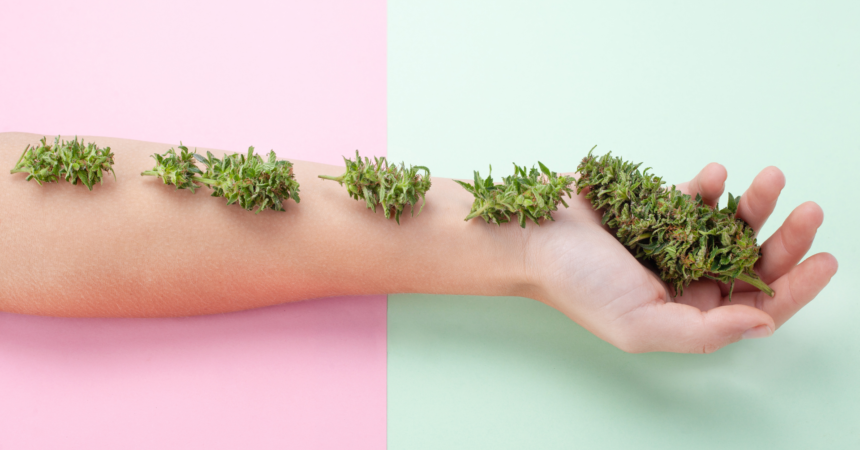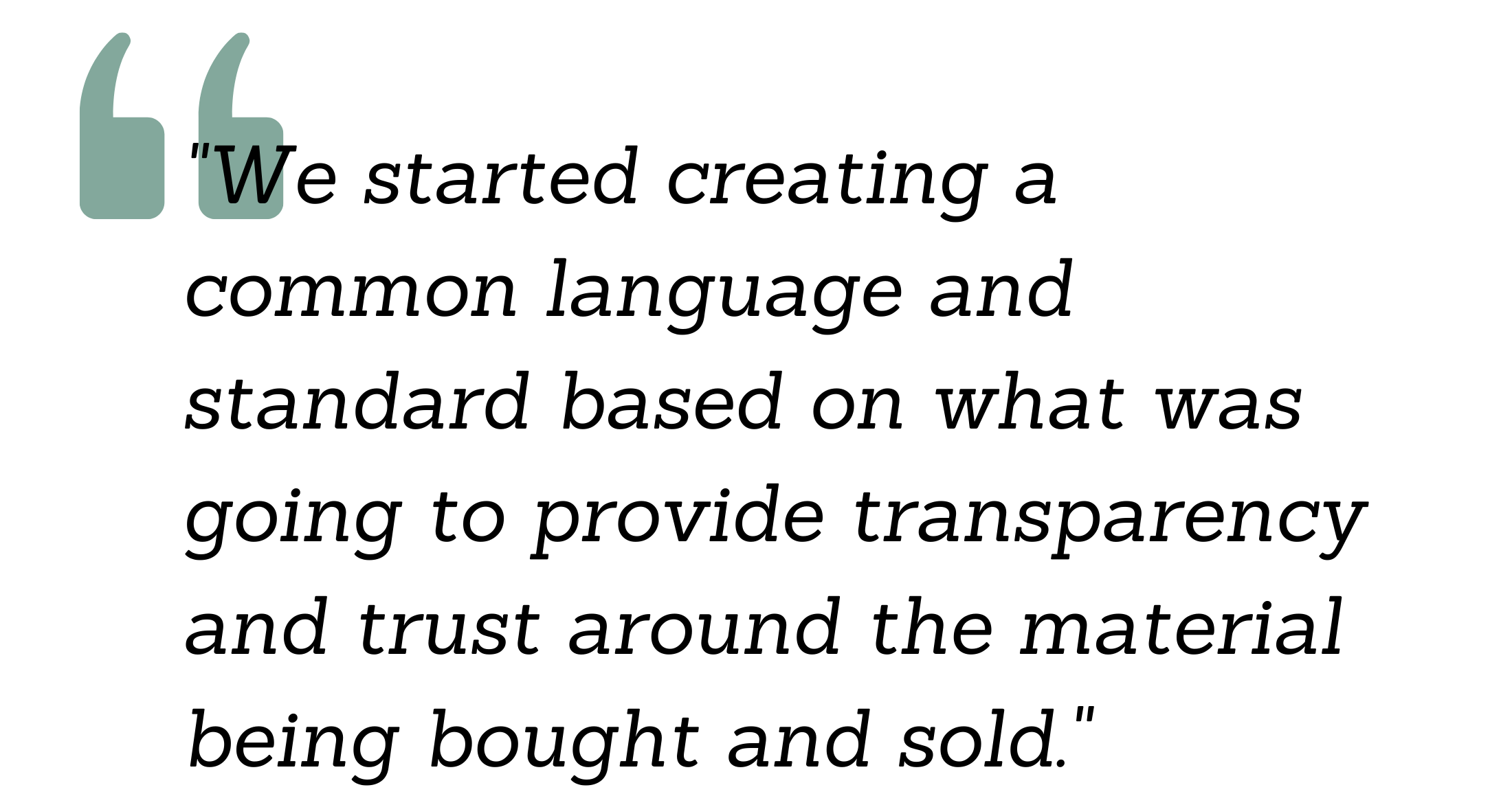Cannabis standards are essential to a healthy supply chain

By Dan Cohn
Milk and alcohol — two things that should not be enjoyed together, but have something very important in common. They’re both regulated according to standards which determine things like fat content or alcohol content, respectively. Nobody is left to wonder if their gallon of milk is actually 2% fat or if a shot of vodka will be unexpectedly stronger than anticipated. Standards like these are essential to maintain quality, safety and consumer confidence. They also lead to more efficiency in the supply chain. That’s why it’s so important for the cannabis industry to embrace standards in order to enjoy better, safer business.
ICHS: LEADERS OF QUALITY STANDARDS
Big Tree is the industry’s first cannabis grading service and is certified and authorized to use the International Cannabis and Hemp Standards (ICHS); one of the leaders in the mission to address the lack of regulations in this budding industry. Their efforts focus on unifying around a common language and development of a quality-grading system that simplifies the communication of products and their value. Founding board member and treasurer Jhavid Mohseni explains how and why the standards organization got started.
“Back in 2016 when I started Tamerlane Trading, connecting buyers and suppliers, the problem that came up very regularly was lack of a common language. If the communication isn’t clear, then people are uncertain, and that undermines the transaction before it even starts. We wanted to make sure we were all talking about the same thing, so we started creating a common language and standard based on what was going to provide transparency and trust around the material being bought and sold.”

Mohseni goes on to say, “While the common language was being standardized, it reminded me of my time travelling in Papua New Guinea where I was first exposed to the local pidgin dialect. Basically a hodgepodge of words and phrases from many different languages that became the predominant trade-language in the 1600’s. We’ve created a trade language for the cannabis and hemp industry. It’s evolved much like how the lingua franca and pidgin languages took root -- initially a combination of jargon and terminology that have been adapted and integrated from legacy operators to commodity traders in order to increase efficiency of communication around the commercial trade of cannabis.“
ICHS is helping businesses move material more efficiently with their grading and certification standards. Their process examines 20 distinctive variables that culminate into a numerical grade of quality. On grading standards, Mohseni says the ICHS decided, “let’s have a certification. Once someone gets certified by the ICHS, they become a certified cannabis grader. They can take that into the industry and help make the conversation around a common language that helps organize this information.” This type of universal communication assists in increasing the fair market value of materials, and this same certification program will be extended to companies who want to offer similar services as Big Tree Grading.
CONSUMER CONFIDENCE IS KEY
Many regulated agricultural commodities offer direction and inspiration for the development of new cannabis-specific standards. Hops, for instance, have an international naming protocol, quality inspection and, most importantly, traceability that provides information that connects the product back to where it came from. Wine, liquor and tobacco all have standards in place that govern labeling, alcohol content and limits, plus guidelines on importing and exporting products. The USDA is also a great resource with practices in place that certify all natural ingredients and prove that no artificial fertilizers, pesticides or genetic modifications are present in products with their seal of approval.

These factors, though not yet adopted across the cannabis industry, will greatly boost consumer confidence and allow for a smoother product flow through the supply chain. Consistency of quality depends on factors such as grow environments, uniform processing procedures, a common language and testing the same way from lab to lab. Logistical efficiencies are achieved by setting operating procedures and transportation standards, and safety, one of the most important reasons for formulating best practices, is fostered through tracking and tracing, pesticide and herbicide protocols and packaging/labeling regulations.
Groups such as the ICHS are working on developing these types of standards, but without a united effort amongst all organizations, how does it come together?
Mohseni suggests, “For standards to take root, they require adoption and usage.” For example, he says, “by instituting grading and creating Big Tree, there’s a whole business that’s been created that directly benefits the operators in the supply chain. We’ve just adopted it, applied it, and it’s working.”
With regard to having these standards spread beyond just each organization’s region, Mohseni says industry groups can take them and apply them to their own markets.
“We’re in the process of decentralizing it and providing white papers and information so that it can become an open standard that can be applied and used by anybody, anywhere.”
TRUST AND TRANSPARENCY
Having common practices throughout the supply chain will benefit everybody. Standards allow for transparency about products and creates trust, which helps build relationships. For wholesalers, having a high level of trust with their buyers means doing more business. A brand that builds trust with the consumer is going to sell more product. The consumer, in turn, will have the added confidence of knowing exactly what they’re buying and whether it’s really what they want.

To Mohseni, the benefits are obvious: “It’s going to allow operators to better plan their business, creating regular sales. It’s going to allow operators to increase transaction size and scale their business from a dollars and cents perspective, without the same kind of angst or anguish that came before having a certificate of grade. It allows marketplaces to provide deeper insights into specific product. These standards are the foundation and lubricant for material moving through the supply chain.”
In summary?
“It increases the efficiency and speed at which people can operate their businesses. Ultimately, these companies will be able to do more with less and become more profitable.”
Imagine raising plants that have the same exact lab results from harvest to harvest, or being able to read the label on a cannabis jar and seeing the quality grade and terpene profile before you try it. Quality assurance, consistency, confidence and safety are all possible for this industry. The sooner standards are adopted, the sooner everyone will enjoy more industry success and more high quality herb.

Dan Cohn is a drummer, audio engineer and music aficionado who enjoys using cannabis to fuel thoughtful conversation, critical listening and relaxing. The first time he made weed brownies, he cut the whole pan into six mega brownies and ate one before a friend's 18th birthday bowling party. He didn't make it to the party.
